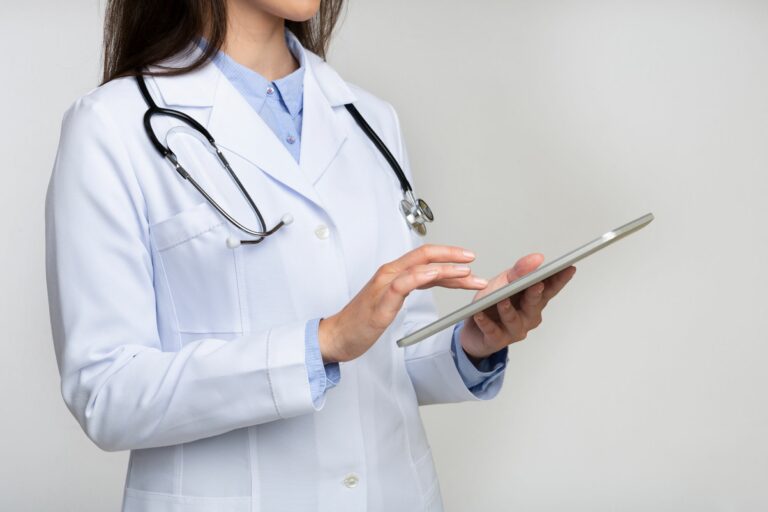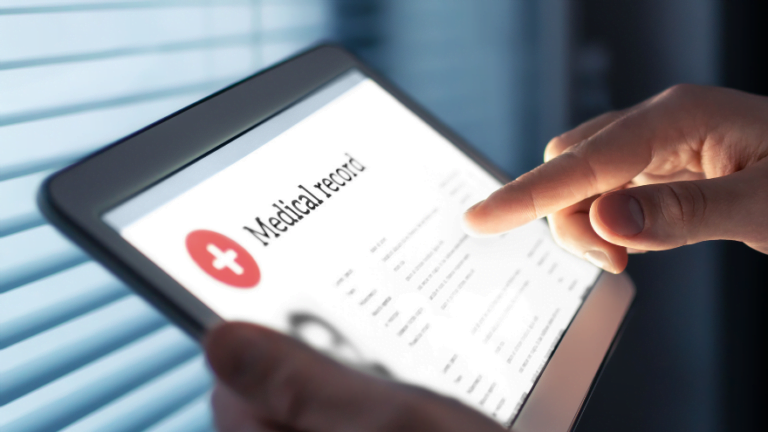Remote Patient Monitoring (RPM) is revolutionizing healthcare delivery across the United States. By using digital technology to monitor patient health from home, RPM provides a continuous stream of data to healthcare providers, enabling a more proactive, efficient, and patient-centered approach to care. This technology is more than a convenience; it is a clinically validated strategy that improves outcomes, reduces costs, and enhances the care experience for patients and providers alike.
Here are 10 key benefits of RPM, supported by clinical research.
1. Timely Detection of Health Issues and Improved Outcomes
RPM improves health outcomes by enabling clinicians to spot negative health trends early, shifting care from a reactive to a proactive model. However, the success of this approach is not guaranteed by the mere presence of technology. A realist review by Emma E. Thomas and colleagues examined 91 different interventions to move beyond asking if RPM works and instead determine how it works best, concluding that the program’s design is the most critical element.
The study found that the most effective RPM programs are built on two core principles. The first is the accurate detection of a patient’s declining health, which involves using reliable sensors and intelligent notifications to distinguish real problems from background noise. The second, and equally important, principle is having a clear clinical workflow in place for a prompt and coordinated intervention, ensuring that a notification is met with a swift and appropriate clinical response.
Ultimately, it is the synergy between these two factors that allows RPM to deliver on its promise. A notification without a response plan is just data, but when reliable detection is directly linked to a timely action, the system becomes a powerful tool for preventative care. This well-designed process is how RPM actively prevents acute health crises, validating its effectiveness and leading to demonstrably improved patient outcomes.
2. Enhanced Patient Engagement and Empowerment
When patients have real-time access to their own health data, they become more motivated and engaged participants in their own care. This leads to better adherence to treatment plans and healthier lifestyle choices.
RPM helps enhance patient engagement and empowerment by making the process of self-monitoring simple and rewarding. Research by Agboola et al. confirms this, showing that seamless, wireless devices dramatically increase how often patients take measurements, directly linking user-friendly technology to higher engagement. This frequent interaction serves as the foundation for a deeper journey, which Agali et al. frame as a progression from being enabled with tools and data, to being actively engaged in the monitoring process, and ultimately becoming empowered with the confidence and insight needed to proactively manage their own health.
3. Significant Cost-Effectiveness and Reduced Spending
RPM creates significant cost-effectiveness by shifting care from expensive, reactive hospital visits to proactive, at-home management. This approach directly reduces spending by preventing costly hospitalizations and readmissions for chronic diseases. For example, some analyses show RPM programs can reduce heart failure costs by up to 52%, validating it as a sound financial strategy for health systems.
A systematic review by Zhang et al. confirms this long-term value, finding that perspective is crucial when evaluating RPM’s cost. While individual providers may note initial setup expenses, the broader payer and healthcare sector viewpoints consistently show RPM to be a cost-effective tool. Their review also emphasized that all model-based studies concluded its value is most apparent when analyzed over the long term, where savings from prevented crises compound.
This is further supported by a modeling study from Mokri et al., which demonstrated that RPM for heart failure is cost-effective from both healthcare and societal perspectives. Their research confirmed this value holds true even when accounting for the added costs of patients living longer, healthier lives. Ultimately, both studies show that the substantial savings from reduced hospitalizations make RPM a financially sustainable and valuable investment in modern healthcare.
4. Streamlined Clinical Workflows and Reduced Burnout
RPM streamlines clinical workflows by automating the laborious task of manual data collection, significantly reducing clinician burnout. By replacing intermittent spot-checks with a continuous data stream, RPM frees up valuable time. A time-motion study by L S et al. found that RPM decreased the time nurses spent on routine monitoring and communication by 45%, producing a 43% increase in time available for direct patient care.
Furthermore, AI-powered RPM platforms address the critical issue of notification fatigue, a major contributor to clinical stress. As an article by Avani Nandini explains, intelligent algorithms can filter and prioritize notifications, ensuring that clinicians are only notified of truly significant events. This intelligent system reduces the noise of false alarms, allowing staff to focus their attention on critical patient needs and proactive interventions, thereby improving efficiency and reducing mental strain.
5. Improved Access to Healthcare
RPM significantly improves access to healthcare by breaking down traditional geographical and physical barriers to care. It allows for the continuous monitoring of patient health data from their homes, eliminating the need for frequent, often burdensome, travel to a clinic. A field study by Laure Millet at NYU Langone Health highlights how this model is reshaping care delivery, enabling proactive management of chronic diseases for patients who may otherwise struggle to access consistent medical oversight.
This enhanced access is particularly beneficial for individuals with complex care needs and those managing chronic conditions that require regular monitoring. The Millet study underscores that by using connected devices, RPM supports these patients while also mitigating the risks and logistical challenges associated with in-person visits. This was a critical advantage during the COVID-19 pandemic, but it remains a powerful tool for improving care continuity for rural, elderly, or mobility-impaired populations.
Ultimately, by bringing care into the home, RPM enhances patient autonomy and empowers individuals to take a more active role in their health. The research by Millet emphasizes that while integrating RPM into existing clinical workflows presents challenges, its ability to connect patients with their care teams from a distance is a transformative step. This model fosters a more accessible, continuous, and patient-centered approach to healthcare, ensuring more people can receive the timely support they need.
6. Enhanced Clinical Decision-Making
RPM significantly enhances clinical decision-making by providing a continuous and comprehensive stream of real-world patient data. According to a framework developed by Jennifer Claggett et al., RPM offers a more holistic view than periodic office visits. This allows clinicians to observe trends and make proactive medical decisions based on how a patient’s health fluctuates over time, especially for those with complex, chronic conditions.
The Claggett et al. framework emphasizes that raw data must be transformed into actionable insights through robust analysis. This is where algorithms and artificial intelligence play a key role in processing the vast amount of information collected by RPM devices. These analytical tools can identify subtle patterns, correlations, and outliers that might be invisible to the human eye, notifying clinicians to potential issues before they become critical and enabling more accurate, evidence-based care adjustments.
7. Increased Patient Volume and Provider Reach
RPM significantly increases a provider’s capacity to care for more patients by streamlining clinical workflows. By automating the continuous collection of health data, RPM allows clinical teams to adopt a “management by exception” model, where they focus their attention only on patients whose data indicates a potential health issue. This efficiency frees up valuable time from routine tasks, enabling a single provider or a small team to effectively oversee a much larger patient panel than would be possible through traditional, in-person appointments alone.
Furthermore, RPM fundamentally expands a provider’s geographical reach, breaking down the physical barriers of conventional healthcare. Care is no longer confined to the clinic walls, as clinicians can monitor and manage patients in their homes, whether they live in a dense urban area or a remote rural community. This capability is crucial for delivering specialized chronic disease management to underserved populations, allowing health systems to serve new communities and address critical gaps in health equity by bringing expert care directly to the patient.
8. Seamless Integration with Electronic Health Records (EHRs)
Seamless integration with EHRs is essential for unlocking the full potential of RPM. As a white paper by Preeti Tupsakhare explains, the EHR acts as the central hub where continuous data from RPM devices is collected and stored. This ensures that real-time physiological data flows directly into a patient’s chart, placing it in context with their complete medical history and eliminating dangerous information silos.
This integration is critical for streamlining clinical workflows and reducing the burden on providers. Instead of toggling between separate platforms, clinicians can view RPM data directly within the EHR, the system they use for all other patient care tasks. The Tupsakhare article highlights that this immediate and unified view allows for more efficient, accurate, and informed clinical decision-making, as providers can make adjustments to care plans with a complete picture of the patient’s health.
Furthermore, a seamless connection between RPM and the EHR enhances patient-provider communication and supports patient engagement. Through integrated patient portals, individuals can access their own RPM data, monitor their progress, and see the same information their doctor sees. This transparency empowers patients to take a more active role in self-management and fosters a more collaborative partnership in achieving better health outcomes.
9. Strong Support for Value-Based Care
RPM is a crucial tool for the shift toward value-based care—a healthcare model where providers are compensated based on patient health outcomes rather than the volume of services delivered. By proactively improving patient health and reducing costs, RPM aligns perfectly with this goal. Medicare and Medicaid now reimburse for RPM services, recognizing their ability to lower costs spent on chronic disease care.
10. Greater Peace of Mind for Patients and Families
Knowing that a health condition is being continuously monitored provides significant assurance and peace of mind for both patients and their loved ones. This constant connection reduces anxiety and ensures that if a problem arises, it can be addressed quickly.
Takeaways
RPM is a transformative clinical tool that directly improves patient health and engagement. By enabling the timely detection of health issues, RPM facilitates proactive interventions that lead to better outcomes, while giving patients access to their own data empowers them to take an active role in their care. This model also breaks down geographical barriers, significantly increasing access to care for rural, elderly, and mobility-impaired populations.
From an operational and financial standpoint, RPM is a powerful strategy for creating a more efficient and sustainable healthcare system. It reduces costs by preventing expensive hospitalizations, streamlines clinical workflows to lower staff burnout, and provides the objective data necessary to succeed in value-based care models. This dual benefit of improving both patient well-being and a health system’s bottom line makes RPM a vital component of modern healthcare.
Discover how DrKumo’s intelligent and secure RPM platform can transform your practice and improve patient outcomes. Contact our team today to schedule a demo and see our solutions in action.
Disclaimer: The information provided in this article is for informational purposes only and is not intended to be a substitute for professional medical advice, diagnosis, or treatment. Always seek the advice of your physician or other qualified health provider with any questions you may have regarding a medical condition.








